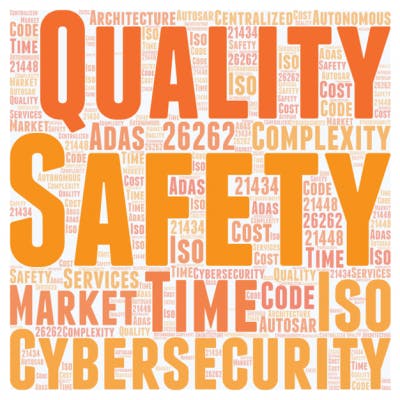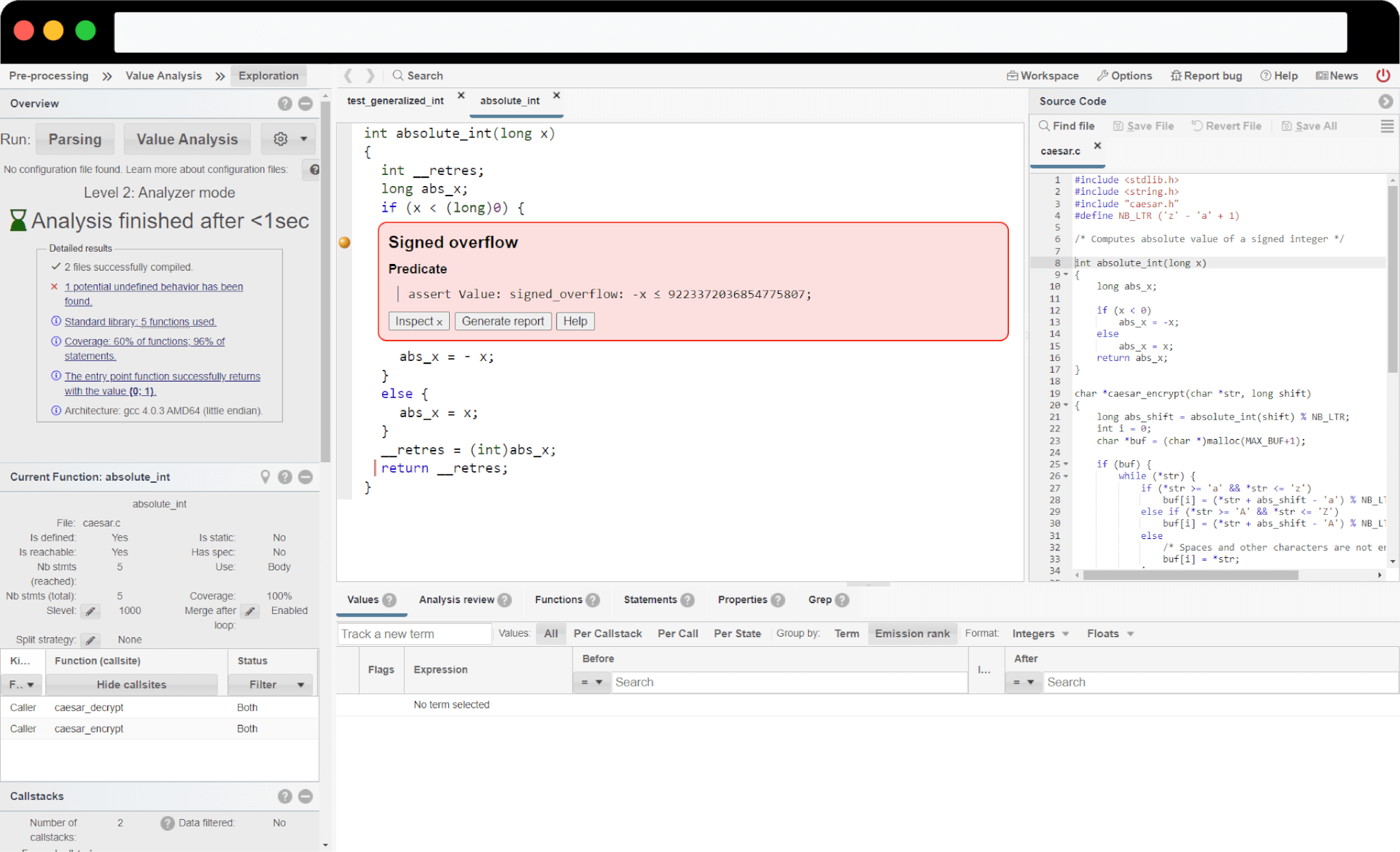Automotive Software
Exhaustive bug detection for ISO 26262, ISO 21434, SOTIF

Industry Overview
Modern vehicles today can contain hundreds of millions of lines of code. Autonomous driving, ADAS systems, and a rise in connectivity are driving the trend of increasing software complexity and the need for more software verification and validation. Today’s software-defined vehicles will shift towards centralized ECUs in order to accommodate the complexity behind the increase in software for driver assistance systems, the self-driving mechanisms, and the hyper-connectivity. This is a trend that creates new challenges for software development.
Challenges encountered in this sector
In the midst of growth, the automotive sector is facing a number of challenges in terms of software development. Even as software complexity has increased exponentially, productivity has lagged behind. Because software complexity in the automotive market is expected to continue to grow at rates never seen before, OEMs and Tier 1s need to find ways to increase their productivity to close the gap with software complexity, as well as comply with stricter safety and cybersecurity standards.

Growing software complexity
As software is growing in complexity and criticality, it is more than ever essential to ensure code quality. With new functionalities like autonomous driving and ADAS, more connectivity, and more ECU/MCU centralization, software development teams need to find new tools and testing processes to maximize their efficiency to keep up with this growth in complexity.
Increase in Verification & Validation
With an increase in complex software functionalities comes the need for more verification and validation of software. The number of lines of code in vehicles is expected to skyrocket, and that means there will be much more software in safety-critical scenarios that will need to be verified to check for any underlying bugs that could trigger safety and security issues in the field.
New and evolving software standards
New vehicle functionalities like autonomous driving, ADAS and more connectivity with cellular and Bluetooth devices means more potential attack surfaces and more safety implications. Software developers will have to comply with stringent standards like ISO 26262 and SOTIF on the safety side as well as ISO 21434 on the cybersecurity side.
TrustInSoft Analyzer mathematically proves the absence of bugs in automotive software

Higher code quality for more efficient software development
TrustInSoft Analyzer runs on formal methods, powerful mathematics that enable an exhaustive analysis of your source code by interpreting it. With no false negatives and no-to-low false positives, TrustInSoft Analyzer’s guarantee on code quality will allow you and your team to keep up with growing software complexity.

Eliminate vulnerabilities and runtime errors earlier
TrustInSoft Analyzer will speed up your software verification and validation process, increasing efficiency and lightening the burden of increased V&V activity. TrustInSoft Analyzer allows you to find bugs earlier in the development cycle and as if it was on target from your computer or private cloud, saving you time and effort – reducing bug detection time by 40x and optimizing time to market.

Compliance with industry and coding standards
The automotive industry faces strict safety standards for software. TrustInSoft Analyzer helps you reach coding standards like MISRA-C and CERT-C as well as ISO 26262 by guaranteeing the absence of undefined behaviors, the most challenging part of standard compliance.
At EasyMile, we are fully aware of the responsibility we have for designing safe and secure autonomous vehicles. Part of this relies on making sure that the code base is bug-free and devoid of flaws used for several types of cyberattacks. TrustInSoft’s solution is an obvious answer because it greatly increases the confidence in our code by providing necessary proofs.
Alexandre Hamez
Tech Lead, EasyMile

Learn more about our product
Mathematically prove C and C++ code quality and maximize code safety and security with TrustInSoft Analyzer.
Discover our productRead our white paper on automotive challenges and how to meet them with exhaustive static analysis

In this white paper, you will learn how to increase productivity to face the growing complexity and ensure the automotive software is immune to cyber-risks and safety malfunctions with the help of the latest innovation of exhaustive static analysis.
To delve deeper into these critical issues, gain actionable insights, and discover effective strategies for addressing these challenges, we invite you to download our comprehensive white paper, Simplifying ISO 26262 Certification with TrustInSoft Analyzer. In this white paper, we will explore in-depth analyses, case studies, and practical solutions that can empower automotive suppliers to meet the demands of today’s rapidly evolving industry. Download now to stay ahead of the curve and drive innovation safely and efficiently in the automotive industry.


